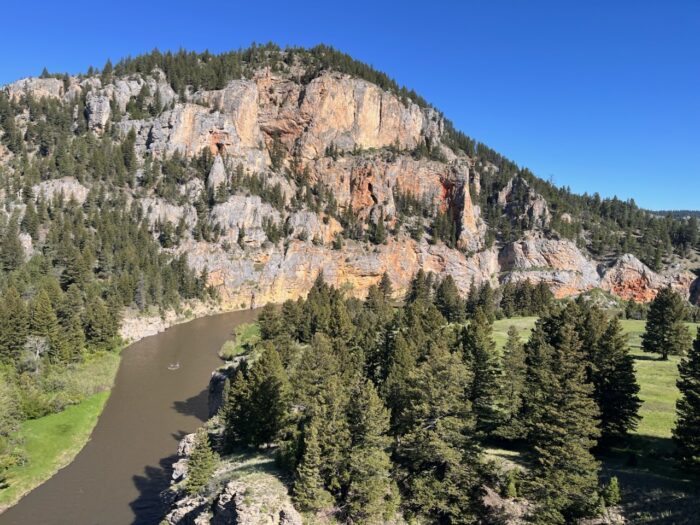Behind the pristine views of one of Montana’s most beloved rivers is a quiet legacy of private land conservation.

Montana’s Smith River is legendary. Those fortunate enough to float the river experience 59 miles of remote river corridors featuring limestone cliffs, dense forests, and renowned trout fishing. Permits are highly sought after, and for good reason: a float on the Smith is more than a river trip. It’s an immersion in wilderness offering a sense of solitude that can be difficult to come by these days. With only a limited number of permits issued each year, the river draws thousands of eager applicants who hope to experience its beauty firsthand. And because the Smith flows through a canyon flanked by private land, the views from the water – and the quality of the experience – is defined by the choices of those landowners.
Private Land, Public Views
That the pristine beauty of the Smith River still exists today is no accident – it’s a testament to decades of conservation partnerships. Over the years, landowners have chosen to partner with The Montana Land Reliance (MLR) and permanently protect their land, gradually conserving significant stretches along the Smith River. These conservation easements work quietly behind the scenes, allowing landowners to continue farming or ranching on their land while limiting subdivision and development. They simultaneously safeguard critical fish and wildlife habitat and preserve the scenic open space that defines the Smith River floating experience.
For a place like the Smith, that means floaters traverse a river corridor that looks and feels largely untouched. Fourteen MLR conservation easements line the winding course of the river, permanently protecting 19,535 acres and 42.8 miles of the Smith River and its tributaries. Remarkably, 10,605 of these acres – one-third of the entire float’s viewshed – are directly visible from the river itself. That’s 17 square miles of scenery and that will remain wild and undeveloped, forever. Each year, thousands of floaters enjoy these uninterrupted views, a public benefit made possibly by private conservation.
Without these permanent protections in place, the Smith River might look very different today – fragmented by subdivisions or lined with vacation homes. Instead, thanks to willing landowners and long-term conservation efforts, it will remain one of Montana’s most iconic and unspoiled river corridors for the benefit of everyone who enjoys a peaceful day on the water. The conservation work behind this float may be invisible, but the impact is felt in every bend of the river.
MLR is immensely proud of what we’ve helped landowners accomplish in this region. The ability to spend days floating by spectacular river benches that will never be developed is one of the most visible examples of the importance of conserving scenic open space. In this sense, conservation easements don’t just preserve the land, but also the experience: the feeling of drifting through open country, hearing nothing but the sounds of the river, and knowing you’re somewhere truly special.
